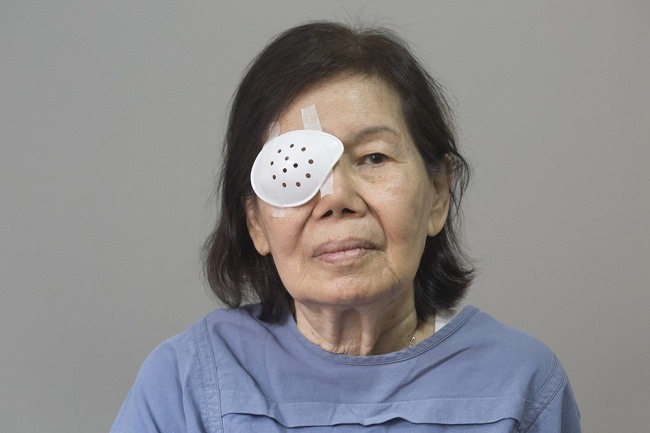Electromyography (EMG) or electromyogram is an examination procedure to measure or record the electrical activity of muscles and nerves which control it. This examination candiagnosis of disorders of the muscles, nerves, or both.
Electromyography is performed using a muscle electrical activity detector, namely electrodes, which are connected to an EMG machine. With this tool, the electrical activity of the muscles will be displayed in graphic form on the monitor screen. The doctor will analyze the chart to determine the results of the examination.

Generally, electromyography is performed in conjunction with nerve conduction velocity (NCV), which is an examination to measure the speed of electrical activity of the nerves that control muscles.
With these two examinations, the doctor can determine the cause of the patient's symptoms, whether due to muscle disorders or neurological disorders.
Types of Electromyography
Based on the technique, there are two types of electromyography that can be used by doctors, namely:
Surface electromyography(sEMG)
This type of EMG is done by placing electrodes on the surface of the skin, over the muscle that is experiencing complaints. Surface electromyography more often used by doctors because it is more practical and safer.
This type of electromyogram is commonly performed on athletes who have problems, such as muscle weakness, in order to reduce the risk of complications. However, sEMG is more accurate for analyzing large muscles located close to the skin.
Intramuscular electromyography
Intramuscular electromyography This is done by using an electrode in the form of a fine and thin needle that is inserted into the muscle through the surface of the skin. This type of EMG can provide a more specific analysis, especially for small, deep muscles.
However, iintramuscular electromyography may cause pain during examination. Although the chances are small, there is also a risk of bleeding and infection due to needle sticks. Therefore, this type of EMG is rarely used or only used under certain conditions.
Electromyographic Indications
Doctors usually advise patients to do an EMG if they experience symptoms of muscle or nerve disorders without an obvious cause, such as:
- tingling
- Numb
- Weakness in muscles
- Pain or cramps in the muscles
- Muscle twitch
Some of the conditions that can be diagnosed with electromyography are:
- Muscle disorders, such as muscular dystrophy or polymyositis
- Disorders of the nerves that affect the muscles, such as myasthenia gravis
- Disorders of the peripheral nervous system, such as peripheral neuropathy
- Motor nerve diseases, such as amyotrophic lateral sclerosis (ALS) or polio
- Disorders of the nerves in the spine, such as hernia nucleus pulposus
In addition, an electromyogram can also be performed to monitor the recovery process in patients suffering from nerve injuries.
Electromyography Warning
Do the following things before undergoing electromyography:
- Tell your doctor if you are using a pacemaker or other electrically powered medical device.
- Tell your doctor if you are taking anticoagulant drugs, such as warfarin or heparin.
- Tell your doctor if you have a blood clotting disorder, such as hemophilia.
- Tell your doctor if you have any infection, irritation, or inflammation on the surface of the skin above the muscle.
Before Electromyography
Before undergoing electromyography (EMG), there are several things that need to be considered, namely:
- Avoid smoking and drinking caffeinated drinks for 2-3 hours before the test.
- Clean yourself thoroughly to remove oil on the skin.
- Stop using lotions or creams on the body, especially on the part to be examined, a few days before the examination or at least on the day of the examination.
- Wear clothing that allows easy access to the area to be examined.
Electromyography Procedure
Electromyography usually takes 30–60 minutes. Good surface electromyography nor intramuscular electromyography basically have the same procedure stages. The only difference is the way the electrodes are attached.
The following is an overview of the electromyography procedure:
- The patient will be asked to remove metal objects, such as jewelry or watches, which may affect the results of the examination.
- The patient will be asked to sit or lie down in the space provided.
- The doctor will clean the surface of the skin over the muscle that is experiencing symptoms, as well as cut any fine hairs that may interfere with the smooth procedure.
- The doctor will attach or insert electrodes in the area of the muscle to be examined.
- The doctor will ask the patient to do things that tighten the muscles, such as bending the arm, so that the electrodes can detect muscle activity while resting and when it is contracting.
- The EMG machine will record the electrical activity of the patient's muscles and display it in graphic form on the monitor screen. Next, the doctor will analyze the chart.
- After the doctor analyzes the muscle activity through the monitor screen, the doctor will slowly remove the electrodes.
After Electromyography
After the EMG examination, patients generally can go home and carry out their usual activities, unless there is a prohibition by the doctor.
For patients who undergo intramuscular electromyography, The doctor will advise the patient to apply cold compresses to the area where the needle was inserted, to relieve any aches or pains that may arise.
Patients can find out the results of the EMG examination carried out on the same day or several days after. The doctor will explain the results of the examination in detail to the patient.
The results of the examination can be said to be normal if the EMG shows little electrical activity when the muscles are relaxed or at rest. Normal electrical activity when a muscle contracts will appear as an elevated graph, according to the strength of the contraction.
If the EMG results are normal, other tests may not be necessary. However, if the results of the examination show that there are abnormalities, the doctor may ask the patient to do further examinations or plan further treatment.
Electromyography Side Effects
Electromyogram examinations are generally safe and rarely cause side effects. However, a small proportion of patients who undergo intramuscular electromyography may experience some side effects at the needle inserted area. These side effects include:
- Light bleeding
- Painful
- Bruises
- Swollen
- tingling
Patients undergoing surface electromyography can also experience an allergic reaction due to the electrode material attached to the skin surface. The patient may also feel slight pain due to irritation when the EMG electrode is removed from the skin.









